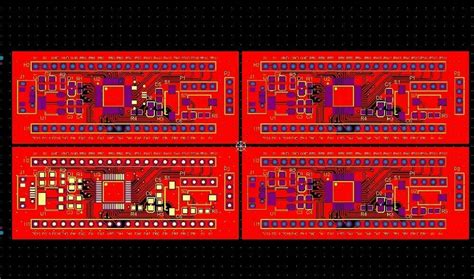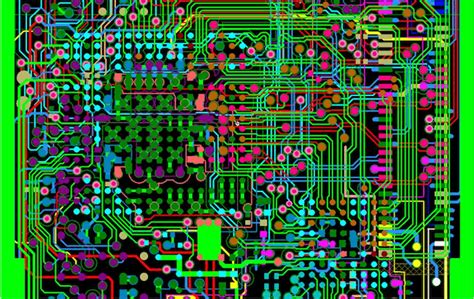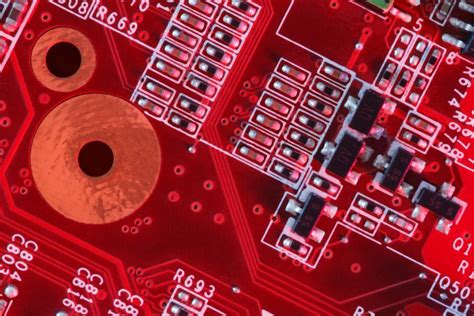Expert MCPCB Manufacturers for Advanced Thermal Management
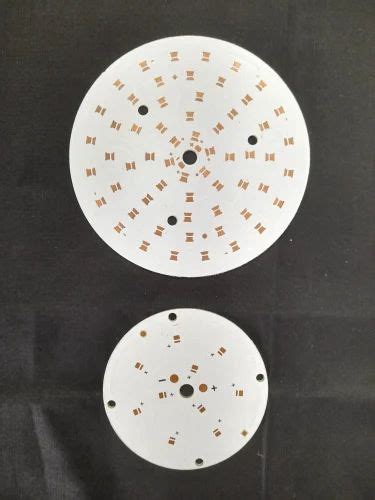
Key Takeaways
When exploring thermal management solutions for high-power electronics, understanding the strategic value of working with expert MCPCB manufacturers becomes critical. These specialists leverage aluminum-core PCB technology to address heat dissipation challenges that conventional FR-4 boards struggle with. By partnering with reputable PCB manufacturing companies, you gain access to advanced fabrication techniques that balance PCB manufacturing cost with performance requirements—a vital consideration for projects ranging from LED systems to automotive power modules.
"Always verify a manufacturer’s certifications for ISO 9001 and UL standards when sourcing MCPCBs—this ensures compliance with rigorous thermal and electrical safety benchmarks."
The PCB manufacturing business revolves around precision material selection, particularly in thermal interface materials like ceramic-filled dielectrics or advanced polymer composites. For industrial applications, manufacturers optimize layer stack-ups to achieve thermal conductivity values exceeding 8 W/mK while maintaining signal integrity. You’ll find that leading providers integrate DFM (Design for Manufacturing) principles early in the process, reducing prototyping iterations and accelerating time-to-market.
Three factors dominate MCPCB selection for thermal-critical systems:
- Coefficient of Thermal Expansion (CTE) matching between layers
- Dielectric thickness precision (±10% tolerance or better)
- Customizable metal core thickness (1.0mm to 3.2mm options)
In aerospace and automotive sectors, where temperature fluctuations exceed 150°C, manufacturers employ laser-drilled vias and copper-plated edges to enhance heat transfer efficiency. This technical synergy between design and PCB manufacturing ensures reliability even in high-vibration environments. For cost-sensitive projects, some suppliers offer hybrid designs that combine aluminum cores with standard substrates, achieving a 30-40% reduction in PCB manufacturing cost without compromising thermal performance.
When evaluating partners, prioritize PCB manufacturing companies with proven expertise in your industry’s regulatory landscape—whether it’s IATF 16949 for automotive or AS9100 for aerospace. Their ability to navigate thermal simulation tools and provide CTI (Comparative Tracking Index) ratings for materials often separates adequate suppliers from truly strategic collaborators.
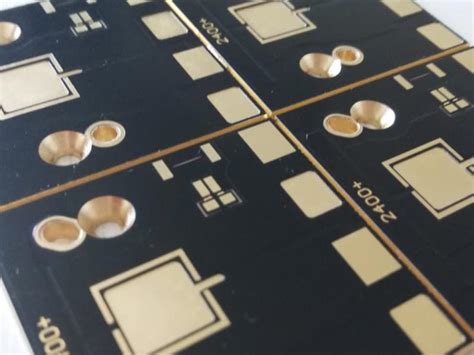
Aluminum-Core PCB Technology: Revolutionizing Thermal Management in Electronics
When designing electronics that generate significant heat, PCB manufacturing processes must prioritize thermal management without compromising performance. Aluminum-core PCBs (MCPCBs) address this challenge by integrating a metal substrate that acts as a heat sink, directly dissipating thermal energy from high-power components. Unlike traditional FR-4 boards, these specialized circuits leverage a layered structure—typically a copper circuit layer bonded to an aluminum base—to achieve up to 10x higher thermal conductivity. This innovation is critical for applications like LED lighting systems, automotive power modules, and industrial motor drives, where overheating can lead to premature failure.
PCB manufacturing companies specializing in aluminum-core technology employ precision etching and advanced dielectric bonding techniques to ensure optimal heat transfer. The aluminum base not only absorbs heat but also provides mechanical stability, reducing warping risks in high-temperature environments. For businesses balancing performance and PCB manufacturing cost, these boards offer long-term savings by minimizing the need for secondary cooling systems like fans or liquid cooling setups. However, material selection and layer thickness must align with operational requirements—thicker aluminum bases (1.5–3.0 mm) enhance durability in harsh conditions, while thinner profiles suit compact designs.
In the PCB manufacturing business, scalability becomes a key advantage. Reputable providers like AndwinPCBA combine automated production lines with rigorous testing protocols to deliver consistent quality across large-volume orders. For instance, thermal cycling tests validate the board’s resilience under repeated temperature fluctuations, a critical factor for aerospace or automotive applications. Additionally, innovations in thermal interface materials (TIMs), such as ceramic-filled adhesives or graphene-enhanced pads, further optimize heat dissipation in next-gen MCPCB designs.
Choosing the right partner among PCB manufacturing companies requires evaluating their expertise in thermal simulation and custom design support. Advanced manufacturers utilize finite element analysis (FEA) software to model heat distribution patterns, ensuring your board layout maximizes cooling efficiency. Whether you’re developing high-brightness LED arrays or electric vehicle battery management systems, aluminum-core technology provides a future-proof foundation for balancing power density with reliability—all while keeping PCB manufacturing cost within budget constraints.
The Role of MCPCB Manufacturers in High-Performance Heat Dissipation Solutions
When designing systems that demand superior thermal management, partnering with specialized PCB manufacturing companies becomes critical. Unlike standard circuit boards, metal-core PCBs (MCPCBs) leverage aluminum or copper substrates to channel heat away from high-power components, making them indispensable for applications like LED lighting, automotive electronics, and industrial machinery. But how do MCPCB manufacturers ensure these boards meet rigorous thermal performance standards?
The answer lies in their expertise in material science and precision engineering. Reputable manufacturers optimize thermal conductivity by selecting substrate materials with heat-dissipation rates 8–10 times higher than traditional FR-4 boards. For example, aluminum-core PCBs combine a dielectric layer with a metal base, creating a thermal pathway that prevents component failure in high-temperature environments. This process requires advanced techniques that impact PCB manufacturing cost, but the long-term reliability gains justify the investment.
| Factor | Standard PCB | MCPCB |
|---|---|---|
| Base Material | FR-4 | Aluminum/Copper |
| Thermal Conductivity | 0.3 W/mK | 1.0–4.0 W/mK |
| Typical Applications | Consumer Devices | High-Power LEDs, EV Systems |
| Cost per Unit | Lower | Higher (20–40% Premium) |
Balancing PCB manufacturing business priorities with technical requirements involves careful planning. You’ll need manufacturers who understand how dielectric layer thickness and metal-core bonding techniques influence heat transfer efficiency. For instance, thinner dielectric layers improve thermal performance but require tighter tolerance controls during production. Leading suppliers mitigate risks by combining automated optical inspection (AOI) with thermal cycling tests, ensuring boards withstand repeated heating/cooling cycles without delamination.
Transitioning to MCPCBs also demands collaboration early in the design phase. By working closely with PCB manufacturing experts, you can avoid costly redesigns and select materials that align with your system’s thermal budget. Whether you’re developing aerospace sensors or industrial motor drives, the right manufacturer will tailor solutions that address both performance benchmarks and PCB manufacturing cost constraints.
Ultimately, the role of MCPCB producers extends beyond fabrication—they act as thermal management partners, enabling innovations in sectors where heat dissipation defines product success.
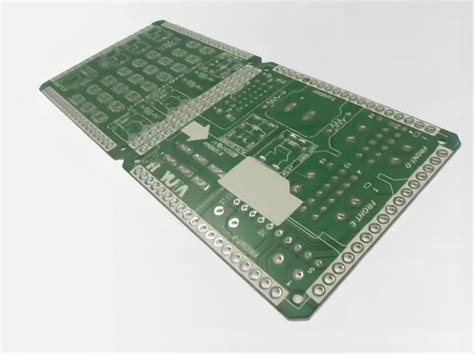
Key Features of Expert MCPCB Manufacturing for Power Electronics Applications
When designing systems for high-power electronics, the choice of PCB manufacturing partner directly impacts thermal performance and operational reliability. Specialized metal core PCB (MCPCB) producers leverage aluminum-core substrates to achieve thermal conductivity values exceeding 150 W/mK—critical for managing heat in applications like motor drives or EV charging systems. Unlike standard FR-4 boards, these designs integrate dielectric layers with ultra-low thermal resistance, enabling heat to dissipate 10-15x faster than conventional solutions.
Leading PCB manufacturing companies prioritize material engineering to balance electrical insulation and heat transfer. For instance, copper-clad aluminum substrates reduce weight by up to 60% compared to all-copper designs while maintaining EMI shielding effectiveness. Advanced laser drilling techniques achieve micro-via densities of 12,000 vias/cm², ensuring precise routing for high-current traces without compromising thermal pathways. This becomes particularly valuable in power electronics applications where thermal cycling endurance directly correlates with product lifespan.
A critical advantage lies in optimizing PCB manufacturing cost through panel utilization algorithms. By nesting complex board geometries with 95% efficiency, manufacturers minimize material waste—a key factor when working with pricey aluminum substrates. Additionally, automated optical inspection (AOI) systems with 3D solder paste measurement reduce defect rates below 50 ppm, preventing costly rework in high-volume production runs.
For businesses evaluating PCB manufacturing business partnerships, look for suppliers offering thermal simulation services during prototyping. These tools model heat distribution under peak load conditions, allowing pre-production adjustments to copper thickness (up to 12 oz) or dielectric thickness (0.1-1.0 mm). Some innovators now incorporate embedded temperature sensors within the board stackup, enabling real-time thermal monitoring without external components.
Beyond material selection, surface finish compatibility determines performance in harsh environments. Electroless nickel immersion gold (ENIG) coatings maintain <10 mΩ contact resistance even after 1,000+ hours of 85°C/85% RH exposure—a necessity for aerospace power systems. Meanwhile, hybrid manufacturing approaches combine CNC machining for aluminum cores with semi-additive processes for fine-pitch components, achieving 0.2 mm line/spacing tolerances required for GaN-based converters.
The most forward-thinking manufacturers now deploy AI-driven thermal optimization during layout design, automatically adjusting component placement to balance thermal hotspots and signal integrity. This synergy between advanced engineering and cost-effective PCB manufacturing processes ensures your power electronics operate within safe junction temperatures, even when pushing performance boundaries.
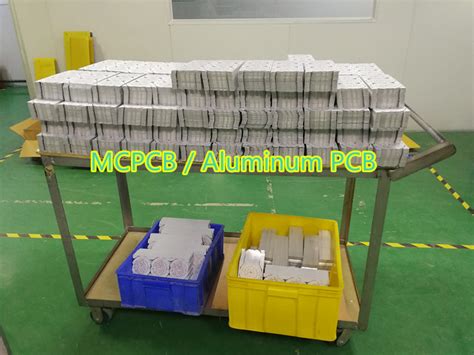
Design Considerations for Aluminum-Based Circuit Boards in Thermal-Critical Systems
When designing aluminum-based circuit boards for thermal-critical applications, you must balance electrical performance with heat dissipation efficiency. The thermal conductivity of the aluminum core—often 10x higher than traditional FR-4 materials—forms the foundation of effective thermal management. However, achieving optimal performance requires careful attention to material thickness, dielectric layer properties, and component placement strategies.
Start by evaluating the PCB manufacturing process capabilities of your chosen supplier. High-quality aluminum-core PCBs demand precise control over the dielectric layer’s thermal resistance, which directly impacts heat transfer from components to the base metal. For instance, a thinner dielectric layer (e.g., 50–100 μm) enhances thermal conductivity but requires advanced lamination techniques to prevent electrical leakage—a capability only top-tier PCB manufacturing companies consistently deliver.
Trace layout is another critical factor. Wider copper traces reduce electrical resistance and improve heat distribution, but they also increase material usage and PCB manufacturing cost. To mitigate this, consider hybrid designs that combine thick traces in high-current zones with optimized routing in signal areas. Advanced thermal simulation tools can help identify hotspots early, allowing you to adjust component spacing or add thermal vias before prototyping.
Component placement directly affects thermal performance. Power devices like LEDs or MOSFETs should be positioned close to the aluminum substrate to minimize thermal resistance. However, uneven mechanical stress caused by coefficient of thermal expansion (CTE) mismatches can lead to solder joint failures. Reputable PCB manufacturing businesses address this by using adaptive mounting techniques or copper-filled vias to stabilize connections during thermal cycling.
Cost-efficiency remains a priority without compromising reliability. While aluminum-core PCBs typically cost 20–30% more than standard boards, their extended lifespan in high-temperature environments offsets initial expenses. Partnering with manufacturers that offer design-for-manufacturability (DFM) feedback ensures you avoid over-engineering. For example, specifying a 1.5mm aluminum base instead of 2.0mm might reduce material costs while still meeting thermal thresholds.
Finally, validate that your manufacturer adheres to IEC 60249-2 standards for metal-clad substrates. This guarantees consistent dielectric strength and thermal endurance—non-negotiables for aerospace or automotive applications where failure risks outweigh PCB manufacturing cost considerations. By aligning design choices with production realities, you create circuits that excel in both performance and durability.
Benefits of Specialized Metal Core PCBs for LED and Automotive Industries
When designing high-performance systems for LED lighting or next-generation automotive electronics, thermal management becomes a non-negotiable priority. Specialized metal core PCBs (MCPCBs) address this challenge by integrating materials like aluminum or copper bases, which efficiently channel heat away from sensitive components. For industries where operational longevity and reliability are critical, partnering with expert PCB manufacturing companies ensures your designs leverage the full potential of these advanced substrates.
In LED applications, excessive heat accelerates lumen depreciation and color shifts, directly impacting product lifespan. MCPCBs mitigate this by offering 5-10x better thermal conductivity compared to standard FR4 boards. This efficiency allows LED manufacturers to push brightness levels while maintaining compact form factors—a key advantage in architectural and automotive lighting systems. Similarly, in electric vehicles (EVs), where power converters and battery management systems generate intense heat, aluminum-core PCBs prevent thermal throttling, ensuring consistent performance under demanding conditions.
The PCB manufacturing cost for MCPCBs often raises questions, but the long-term savings outweigh initial investments. By reducing heat-related failures, these boards lower warranty claims and replacement cycles—critical factors in industries like automotive, where recalls can tarnish brand reputation. Leading PCB manufacturing businesses optimize material usage and layer stacking to balance thermal performance with budget constraints, ensuring scalability for mass production.
Transitioning to MCPCBs also simplifies compliance with stringent industry standards. For example, automotive-grade boards must withstand thermal cycling tests (-40°C to +150°C) and vibrations without delamination. Specialized manufacturers achieve this through precision etching and advanced bonding techniques, creating boards that survive harsh environments while maintaining signal integrity.
As you evaluate suppliers, prioritize PCB manufacturing partners with proven expertise in dielectric material selection and thermal simulation tools. These capabilities ensure your MCPCBs not only meet today’s requirements but also adapt to future innovations in high-power electronics. Whether you’re scaling LED production or engineering autonomous vehicle systems, the right thermal management foundation starts with purpose-built metal core solutions.
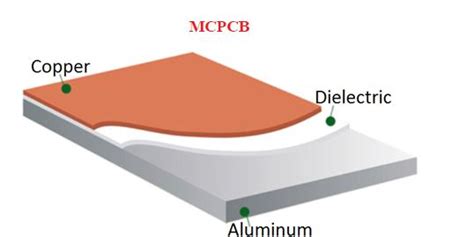
How Advanced MCPCB Production Ensures Reliability in High-Temperature Environments
When operating in high-temperature environments, electronic systems demand PCB manufacturing processes that prioritize thermal stability. Expert PCB manufacturing companies leverage aluminum-core MCPCB (Metal Core Printed Circuit Board) designs to address heat dissipation challenges inherent in power electronics, LED lighting, and automotive systems. The precision of material selection—such as thermally conductive dielectrics and copper-free aluminum substrates—ensures minimal thermal resistance, preventing component degradation even under sustained thermal stress.
Advanced production techniques directly impact PCB manufacturing cost by optimizing material usage while maintaining performance. For instance, laser-drilled micro-vias and automated optical inspection (AOI) systems ensure consistent layer alignment and defect detection, reducing waste and rework. This precision is critical in applications like aerospace, where temperature fluctuations can exceed 150°C. By integrating high-temperature laminates (e.g., polyimide or ceramic-filled substrates), manufacturers enhance the structural integrity of boards, mitigating warping or delamination risks.
The PCB manufacturing business also relies on rigorous testing protocols to validate reliability. Thermal cycling tests simulate extreme operating conditions, verifying that MCPCBs maintain electrical continuity and mechanical stability. For example, in automotive LED modules, boards must endure engine compartment temperatures while delivering uninterrupted performance. Advanced manufacturers employ simulation software to model heat distribution, ensuring optimal copper thickness and trace layouts for efficient heat transfer.
Transitioning to high-performance MCPCBs requires balancing design complexity with PCB manufacturing cost efficiency. Partnering with specialized PCB manufacturing companies that offer Design for Manufacturability (DFM) feedback ensures your application avoids over-engineering. Techniques like direct-bonded copper (DBC) layers or selective anodizing further enhance heat dissipation without inflating production budgets.
Ultimately, the reliability of MCPCBs in extreme environments hinges on material innovation and process control. From thermal interface materials (TIMs) that bridge component gaps to coefficient of thermal expansion (CTE)-matched layers, every detail contributes to long-term durability. By prioritizing these factors in your PCB manufacturing strategy, you secure systems that perform consistently where traditional boards would falter.
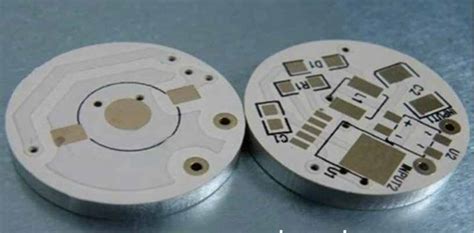
Innovations in Thermal Interface Materials for Next-Gen MCPCB Designs
When designing metal-core PCBs (MCPCBs) for high-power applications, the choice of thermal interface materials (TIMs) becomes as critical as selecting the right pcb manufacturing partner. Modern thermal management challenges demand materials that not only bridge the gap between heat-generating components and aluminum substrates but also adapt to increasingly compact and complex board architectures. Leading pcb manufacturing companies now integrate advanced TIMs like graphene-enhanced adhesives, phase-change polymers, and ceramic-filled composites to achieve thermal conductivities exceeding 15 W/mK—a 300% improvement over conventional silicone-based solutions.
The evolution of TIMs directly impacts pcb manufacturing cost structures, particularly when balancing performance with production scalability. For instance, nano-engineered thermal greases reduce interfacial thermal resistance by 40% compared to traditional pastes, but require precision dispensing systems that specialized manufacturers optimize through automated assembly lines. This technical refinement ensures consistent performance while maintaining cost-efficiency—a key consideration for businesses scaling their pcb manufacturing business in competitive markets like automotive LED lighting or 5G infrastructure.
Emerging hybrid material systems now enable multi-functional interfaces that combine electrical insulation with directional heat spreading. Manufacturers embedding vertically aligned carbon nanotubes within dielectric layers demonstrate how next-gen MCPCBs can achieve localized thermal gradients below 2°C/mm, even in 200W+ power modules. Such innovations demand close collaboration between design engineers and pcb manufacturing experts to address coefficient of thermal expansion (CTE) mismatches—a critical factor preventing delamination in thermal-cycling environments.
As power densities in aerospace and industrial systems escalate, the strategic selection of TIMs influences long-term reliability. High-reliability pcb manufacturing companies now perform accelerated life testing on interface materials under combined thermal-mechanical stress, validating performance across -55°C to 200°C operational ranges. This proactive approach minimizes field failures while aligning with the cost-to-performance ratios essential for mission-critical applications.
Ultimately, the synergy between material science advancements and pcb manufacturing expertise defines the success of modern thermal management strategies. By prioritizing TIMs with tailored thermal impedance profiles and manufacturing-compatible curing processes, engineers unlock new possibilities in power density and system miniaturization without compromising on durability or pcb manufacturing cost targets.
Selecting the Right MCPCB Manufacturer for Aerospace and Industrial Applications
When sourcing MCPCB manufacturers for mission-critical applications, you need to prioritize partners with proven expertise in handling the unique thermal and mechanical demands of aerospace and industrial systems. Unlike standard PCB manufacturing companies, specialized providers in this niche must balance PCB manufacturing cost efficiency with uncompromising performance standards—a delicate equilibrium that directly impacts product longevity and safety.
For aerospace projects, manufacturers should demonstrate compliance with AS9100D or equivalent certifications, ensuring traceability across every layer of the PCB manufacturing business. Look for suppliers capable of producing aluminum-core boards with thermal conductivity ratings above 8 W/mK, paired with dielectric materials that maintain stability under extreme temperature cycling (-55°C to +150°C). Industrial automation applications, conversely, require boards optimized for continuous high-power operation, where copper thickness (up to 12 oz) and solder mask durability become critical factors.
Three key considerations should guide your selection:
- Material science capabilities: Manufacturers must tailor metal-core substrates (aluminum, copper, or steel alloys) to your specific heat dissipation profiles.
- Precision tolerances: Aerospace-grade MCPCBs demand ±0.05 mm drilling accuracy and impedance control within 5% variance.
- Scalability: Verify whether the PCB manufacturing partner can transition prototypes to full production without compromising thermal performance metrics.
Leading providers differentiate themselves through multi-physics simulation tools that predict thermal expansion mismatches and micro-vibration impacts—essential for satellite systems or robotic assembly lines. Additionally, assess their supply chain resilience: aerospace projects often require ITAR-compliant material sourcing, while industrial clients benefit from vendors with IATF 16949 certifications for automotive-grade manufacturing processes.
Cost optimization in this sector isn’t about finding the cheapest PCB manufacturing cost but identifying value-engineered solutions. For example, some manufacturers reduce layer counts through advanced via-in-pad designs, lowering material expenses while improving heat transfer efficiency by 18-22%. Always cross-reference quotations with thermal reliability testing data—accelerated life testing (ALT) reports revealing >100,000-hour mean time between failures (MTBF) are industry benchmarks.
By aligning your selection criteria with these technical and operational parameters, you’ll secure a manufacturer capable of delivering MCPCBs that withstand extreme operational stressors while aligning with your project’s budgetary and timeline requirements.
Conclusion
When evaluating pcb manufacturing partners for advanced thermal solutions, understanding the strategic value of specialized metal-clad expertise becomes critical. The right pcb manufacturing companies don’t just deliver boards—they engineer systems that solve heat dissipation challenges inherent in high-power applications like aerospace, automotive LED arrays, or industrial automation.
A key differentiator lies in balancing pcb manufacturing cost with performance longevity. While aluminum-core substrates inherently improve thermal conductivity, their true effectiveness depends on precision layering techniques and material selection—areas where experienced manufacturers optimize designs to prevent costly redesigns or field failures. This becomes particularly vital when scaling production, where even minor inefficiencies in dielectric layer bonding or copper thickness can compound into significant operational expenses.
For businesses navigating the pcb manufacturing business landscape, prioritizing partners with vertically integrated capabilities ensures tighter quality control over every production phase. From laser-drilled vias that enhance heat transfer to custom-finish options for harsh environments, these suppliers streamline prototyping through mass production while maintaining compliance with industry-specific certifications.
Leading pcb manufacturing companies also invest in R&D to address emerging thermal interface materials, such as ceramic-filled prepregs or graphene-enhanced adhesives, which push the boundaries of thermal resistance thresholds. By collaborating with such innovators, you gain access to future-ready solutions that extend product lifecycles and reduce total ownership costs—a decisive advantage in markets where reliability defines competitiveness.
Ultimately, selecting a manufacturer isn’t just about procuring components; it’s about forging partnerships that align with your technical roadmap and risk mitigation strategies. Whether optimizing pcb manufacturing cost structures or ensuring traceability for aerospace-grade applications, the right choice transforms thermal management from a design constraint into a performance catalyst.
FAQs
How do thermal management needs influence your choice of PCB manufacturing companies?
When selecting partners for PCB manufacturing, prioritize firms with proven expertise in metal-core designs. Specialized PCB manufacturing companies invest in advanced thermal simulation tools and precision etching techniques to handle high-power density layouts, ensuring optimal heat dissipation in applications like LED arrays or automotive control systems.
What drives PCB manufacturing cost differences for aluminum-core boards?
The PCB manufacturing cost varies based on material grades (e.g., aluminum alloy types), layer complexity, and surface finishes. High-frequency applications often require premium dielectric layers with enhanced thermal conductivity, increasing material expenses. However, bulk orders through established PCB manufacturing business partnerships can reduce per-unit costs by up to 30%.
Can standard PCB manufacturing processes handle metal-core designs?
Traditional PCB manufacturing workflows aren’t optimized for aluminum-core boards. Specialized processes like laser-drilled vias, thermal bonding techniques, and non-standard solder masks are essential. Leading manufacturers integrate automated optical inspection (AOI) systems to verify structural integrity in high-temperature environments.
Why partner with a PCB manufacturing business focused on R&D?
Innovative PCB manufacturing business providers accelerate prototyping cycles for thermal-critical systems. Their R&D teams develop custom solutions like hybrid copper-aluminum stacks or embedded heat sinks, which improve thermal performance by 40–60% compared to off-the-shelf options.
How do PCB manufacturing companies ensure reliability in aerospace applications?
Top-tier PCB manufacturing companies implement military-grade testing protocols, including thermal shock cycling (-55°C to 150°C) and vibration resistance assessments. They also use low-outgassing materials to prevent performance degradation in vacuum environments, critical for satellite and avionics systems.
Explore Advanced MCPCB Manufacturing Options
Ready to enhance your project’s thermal efficiency? Click here to consult with Andwin PCB’s experts for tailored metal-core solutions that align with your technical and budgetary requirements.


